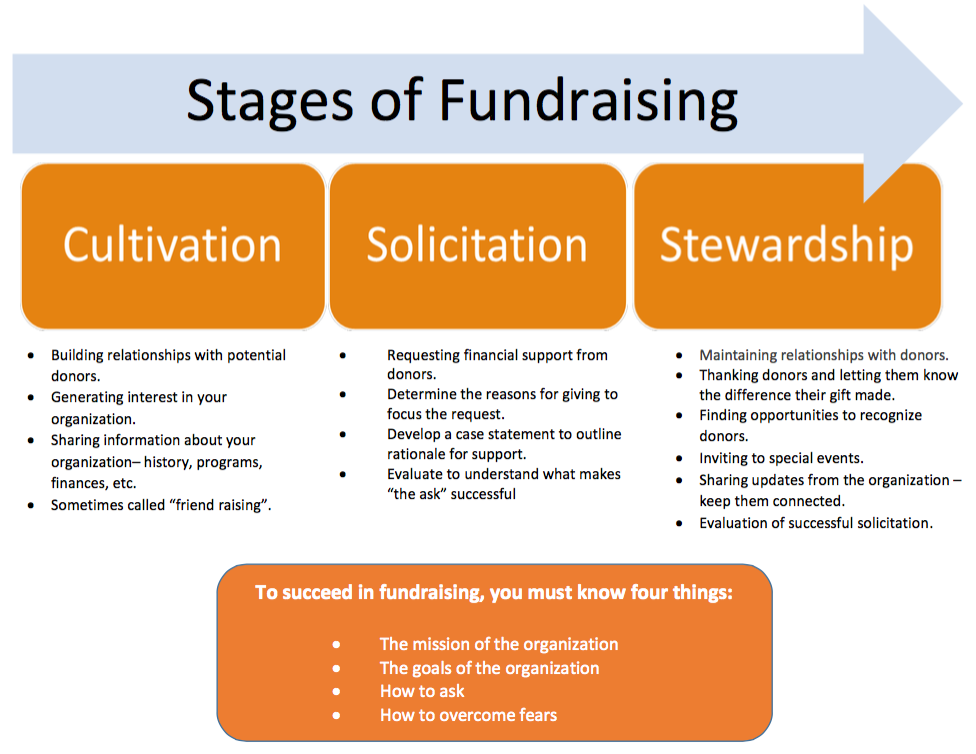At its most basic level, fundraising is getting people interested and engaged in your cause. It is not sufficient to participate in fundraising merely to meet annual income goals; your fundraising program should also focus on how to build and sustain long-term relationships with your donors.
Fundraising can be an intimidating subject to board and staff members. You can change this by breaking it down to its most fundamental aspect, relationship building. The Fundraising Effectiveness Survey, an annual project led by the Association of Fundraising Professionals (AFP) and the Center on Nonprofits and Philanthropy at the Urban Institute, has repeatedly shown that:
The average nonprofit has a 60-70% chance of getting additional contributions from existing donors and less than a 2% chance of receiving a gift from a prospect. (Funding Effectiveness Project)
In other words, your current donors are the gold mine for a successful fundraising program! Connect with your donors regularly, thank them, keep them informed, ask for input, and invite them to participate in any way that fits for them. The most successful fundraising programs are built around the premise that it's the long-game that matters most and building relationships with donors and supporters is the way to assure sustainable fundraising efforts.
The resources provided here emphasize that fundraising must be a collective effort of board members and staff regardless of the size of your organization. Everyone can participate in efforts to increase the number of people who know about and want to support your organization.
A helpful resource that you can share with your board is this handy one-page overview Stages of Fundraising that provides examples of how board members can be involved in the different stages of fund development.

![]() Website Resources
Website Resources
- The Fundraising Authority
- National Council of Nonprofits
- Association of Fundraising Professionals
- The Chronicle of Philanthropy
- Free Management Library
- Bloomerang
- NonProfitPro
- Online Fundraising
- Fundraising Statistics
Additionally, fundraising experts Gail Perry and Jerry Panas have helpful websites that include free newsletters, webinars, and other resources.









